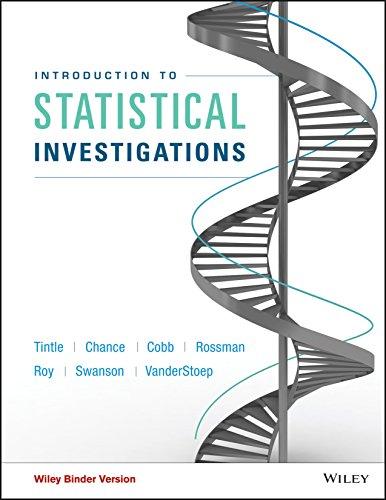Suppose two surveys are done to see if Democrats, Independents, and Republicans differ on their agreement with
Question:

a. Input the table for Survey A in the Multiple Proportions applet and report the MAD statistic.
b. Do at least 1,000 shuffles to find a null distribution for Survey A. Report your p-value and standard deviation of the null distribution.
c. Input the table for Survey B in the Multiple Proportions applet and report the MAD statistic.
d. Do at least 1,000 shuffles to find a null distribution for Survey B. Report your p-value and standard deviation of the null distribution.
e. You should have found the MAD statistics are the same for both surveys. Explain why they are the same.
f. You should have also found the p-value from Survey B was much smaller than that for Survey A. Explain why this makes sense intuitively.
g. Even though the MAD statistics are the same, explain why the p-value for Survey B is smaller based on the two null distributions.
DistributionThe word "distribution" has several meanings in the financial world, most of them pertaining to the payment of assets from a fund, account, or individual security to an investor or beneficiary. Retirement account distributions are among the most...
Step by Step Answer:

Introduction To Statistical Investigations
ISBN: 9781118172148
1st Edition
Authors: Beth L.Chance, George W.Cobb, Allan J.Rossman Nathan Tintle, Todd Swanson Soma Roy





